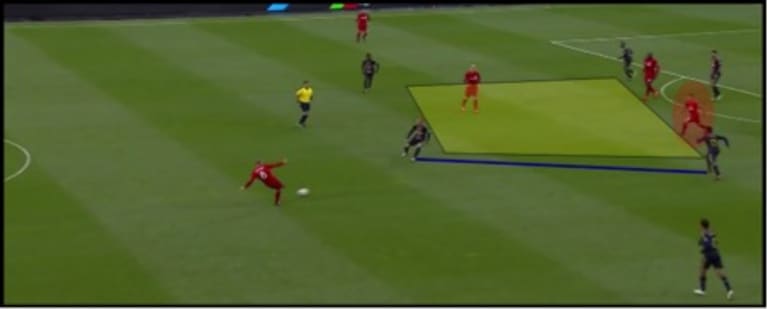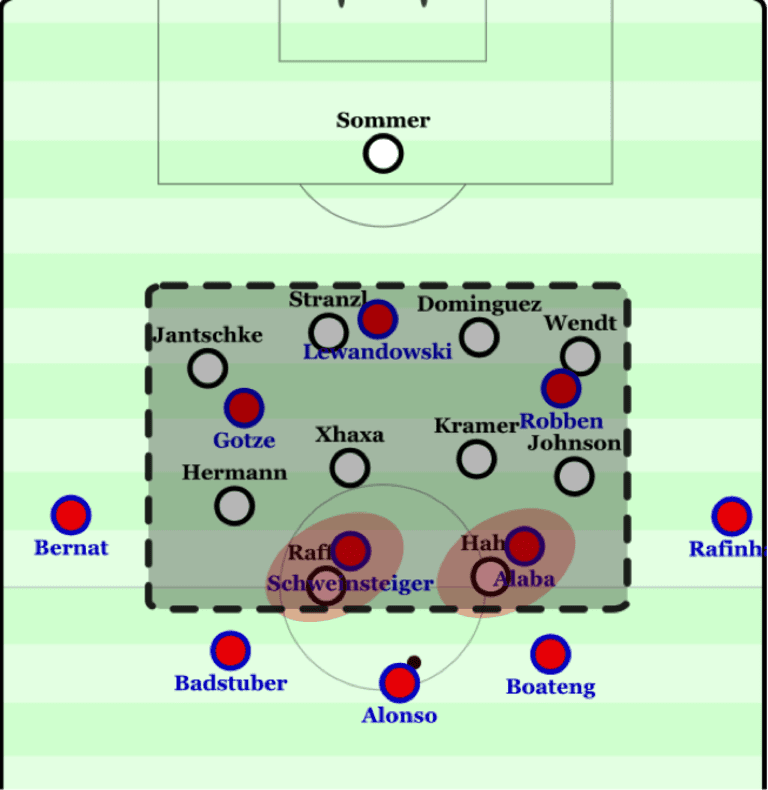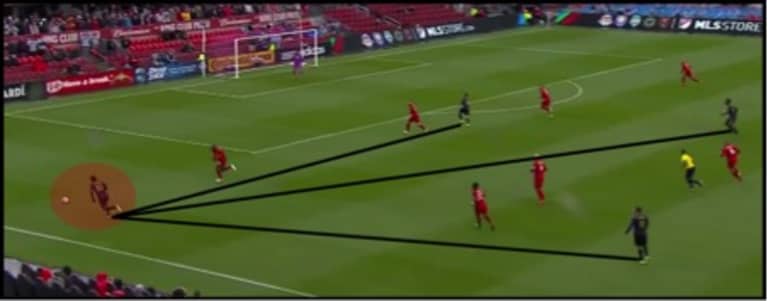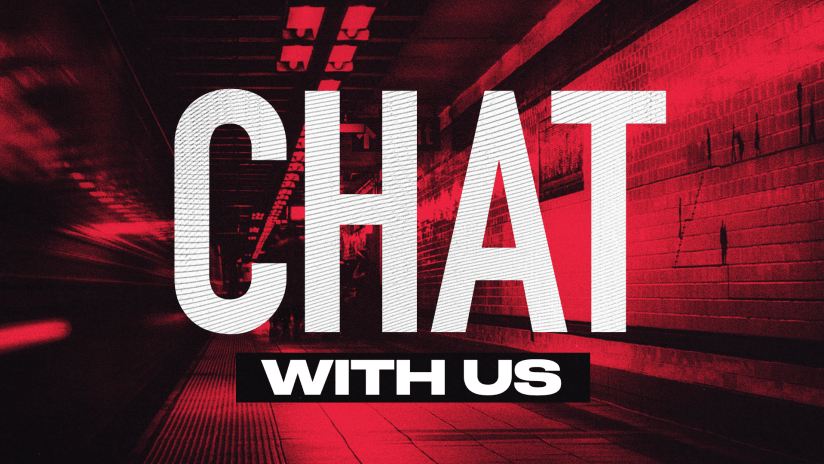After just falling short against Giovinco’s Toronto side, the Red Bulls are looking to bounce back today against a Philadelphia side who now have no chance of reaching the playoffs. Despite that 2-1 loss, Jesse Marsch’s side sit clear at the top of the Eastern Conference with 4 points and a game in hand on 2nd placed Columbus Crew.

In their most recent game, Philadelphia also lost to the hands of Toronto in a convincing defeat where they were 2
nd
best all game. Making just 5 shots to Toronto’s 21 (producing a TSR of 0.192) and 38% possession, the Union were dominated by their opposition whose integration of Sebastien Giovinco was crucial.
Philadelphia lined out in a 4-4-1-1 formation which struggled to control the central space between midfield and defence in defence, whilst it failed to access the same space when going forward.
Andre Blake started as a goalkeeper behind a back four of Andrew Wenger, Richie Marquez, Steven Vitória and Raymon Gaddis from left to right. Brian Carroll and Michael Lahoud made up a double pivot which had some connection issues throughout due to their positioning. Cristián Maidana, the Union playmaker, featured as a 10 in between the much less influential C.J Sapong and Eric Mbu. Fernando Aristeguieta lead the line ahead of this 3 and looked competent despite his lack of service during periods of the game.
Zonal Marking and Degrees of Compactness without the Ball
An interesting feature of the Union defensive setup was their use of a zonal marking system. Specifically, they used a more standard position-orientation where an individual’s reference point for his positioning is his teammates. As a collective, they look to work a closed defensive block and control the space through maintaining a strong spacing with a clear organisation.

The above diagram is taken from Rene Maric’s analysis of the variations of Zonal Marking on our website, Spielverlagerung. Click on the image to be taken there.
The clearest contrast between this and the more common man-marking is that by looking to control space, the team can maintain a clear organisation where a man-marking one would be disorganised by opposition movement.
Situationally, in spaces closer to the ball the nearby players could become oriented to man-marking which was done in order to maintain an ability to put pressure on the ball. Through doing this they also had the intention of simply cutting off short options and making the build-up more difficult for Toronto.
A big advantage of position-oriented zonal marking is that it allows a team to maintain its compactness. This is not only because the structure isn’t disrupted by opposition movements, but that maintaining minimal gaps between players is the main aim. Such a defensive system was executed by Lucien Favre at Borussia Monchengladbach to great success. Also defending in a 4-4-2 formation, they were very compact without possession and teams such as Bayern struggled to break through the centre of the shape.
However, despite looking to maintain this compact defence, Philadelphia had some issues in the execution of their strategy. Mainly they struggled to contain Sebastien Giovinco who frequently found small gaps of space in between the lines of midfield and defence. The Italian’s close control and dribbling ability is vital in such situations as it allows him to keep the ball against heavy defensive pressure.

Against Philadelphia, it will be important for RBNY to get their similar players in positions within the Union defensive block. If Felipe and Dax McCarty can find incisive passes into players such as Sam and Veron in between the lines then they can use their technical ability to keep a hold of the ball and move the attack through a dangerous position.
Lack of Central Access in Possession
In an overall poor performance, the Union were quite weak in a few key aspects of their possession game.
During their build-up, there was often a disconnection between the two central midfielders which made the task of moving the ball through the midfield very difficult. When you paired this disconnection with a lack of support from the two wide players, it meant that the ball-carrier could be isolated. This would force a large number of long balls as a last resort which the Toronto backline easily dealt with.

Without a strong build-up of possession, the Union found it difficult to have an effective possession game higher up the pitch. Throughout the game, they struggled to break through the centre of Toronto’s defensive block and instead would harmlessly move the ball through the wings.
This was highlighted by the movement of Maidana, who had to drop deep or to wide positions just to get a touch of the ball. The areas in which he did manage to receive a pass were weak in terms of strategical value and the opposition were content for him to stay in these positions.

In the above scene you can see how Maidana has had to move to the wing to get on the ball. Not only this, but the great distances between him and his nearest teammates are evident which makes for a disconnected attack. The attacking midfielder has no support around him and must make an isolated attack which has a limited degree of variability and thus, is predictable. After slowing his man down with ease, Jackson makes a simple tackle to dispossess the Union attacker.
Without the ability to use the centre effectively in the final third, the majority of attacks from Philadelphia came from wide areas. They hardly threatened from such areas as their means of creating chances were linear due to the limited possibilities provided by wide spaces.
When attacking down the wing, there are only a small selection of options which can be taken. The most common two are to make a cross, which itself is a very inefficient choice, or a dribble. There are then issues with the latter when a) the player only has 180’ of movement and b) it is usually isolated, so he is alone up against 1 or more defenders.
When it comes down to the clash today, Marsch will be looking for his side to emphasise this issue of Philadelphia’s possession game. Throughout the season, the Red Bulls have developed a clear defensive strategy which is based on a pressing game with central control. This could be a vital feature of the match as they must continue to restrict the opposition’s access into the centre.
After their 3-1 loss to Toronto over 2 weeks ago, Jim Curtin has had ample time to prepare for this fixture and will be demanding an improved performance from his team. We are also bound to see similar expectations from Marsch, whose Red Bull team will be looking to finish the regular season strong at the top of the table. If his team are able to exploit the weakness both with and without the ball which the Union showed against Toronto, they look a good bet to do so too.




